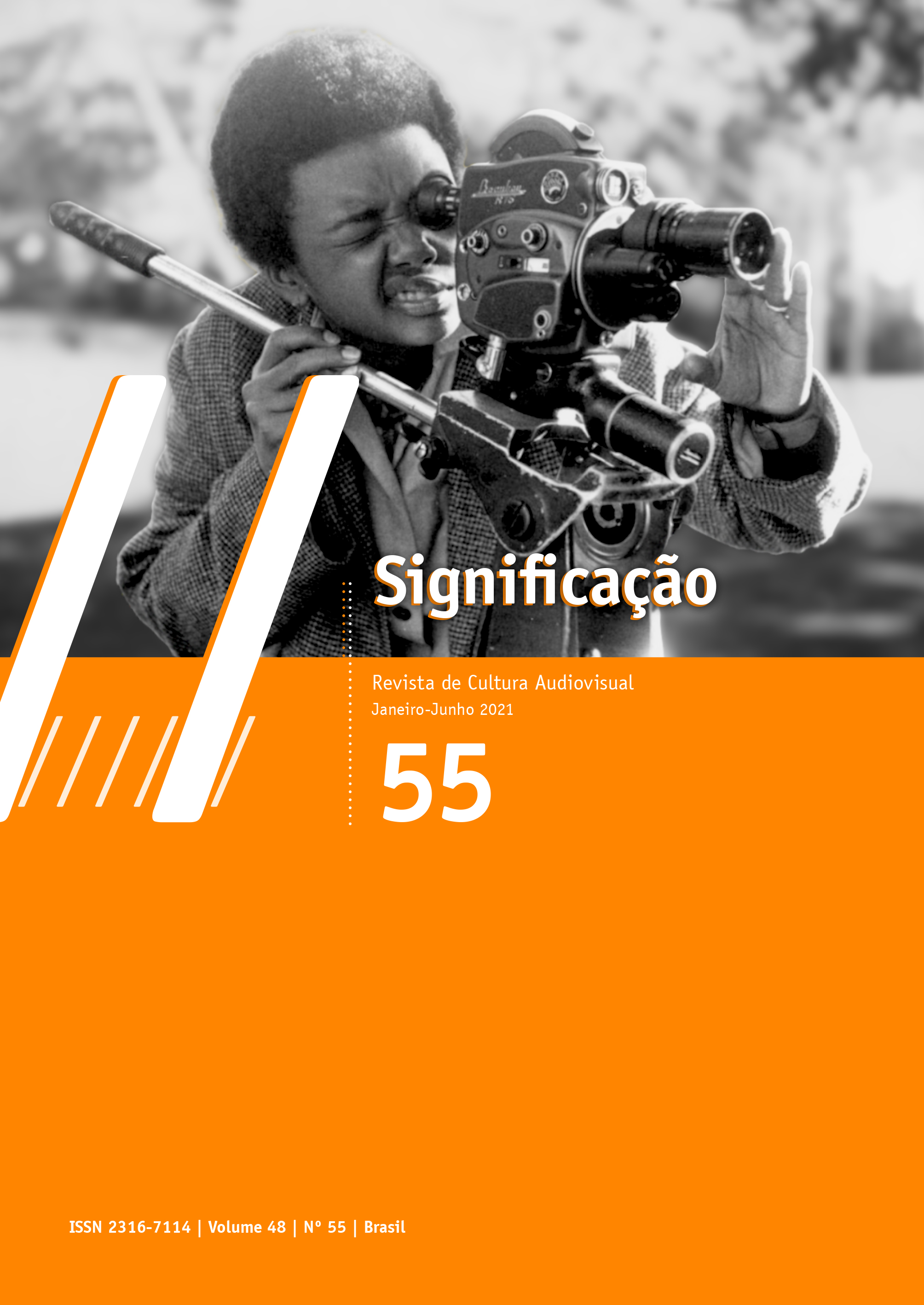A semiotic view at the rashomon effect
DOI:
https://doi.org/10.11606/issn.2316-7114.sig.2021.167292Keywords:
Rashomon effect, Discursive semiotics, Audiovisual enunciationAbstract
The Rashomon effect is characterized as a narrative that presents several contradictory points of view on the same subject, converging to an inconclusive ending. This concept emerged based on the film Rashomon (1950), by Akira Kurosawa, the object of study in this paper. The film is analyzed through concepts of discursive semiotics. The notions of credulity and credibility and the elements of discursive syntax, as well as the variations in the points of view and perspectives throughout the film narrative, corroborate for the construction of a sense of objectivity and subjectivity, which, in turn, configures the enunciative contracts.
Downloads
References
BARROS, D. L. P. Teoria do discurso: fundamentos semióticos. 3. ed. São Paulo: Humanitas; FFLCH, 2002.
BERTRAND, D. Caminhos da semiótica literária. Tradução: Grupo CASA. Bauru: EDUSC, 2003.
DUARTE, A. L. “De ‘Dentro do bosque’ a Rashomon: história, literatura e cinema”. ArtCultura, Uberlândia, v. 14, n. 24, p. 167-183, jan./jun. 2012.
FIORIN, J. L. As astúcias da enunciação: as categorias de pessoa, espaço e tempo. São Paulo: Ática, 2005.
GREIMAS, A. J. Sobre o sentido II: ensaios semióticos. Tradução Dilson Ferreira da Cruz. São Paulo: Nankin; Edusp, 2014.
GREIMAS, A. J.; COURTÉS, J. Dicionário de semiótica. Tradução Alceu Dias Lima et al. São Paulo: Contexto, 2011.
HEIDER, K. G. “The Rashomon Effect: When Ethnographers Disagree”. American Anthropologist, Hoboken, v. 90, n. 1, p. 73-81, 1988.
MASSI, F. O romance policial do século XXI: manutenção, transgressão e inovação do gênero. São Paulo: Cultura Acadêmica, 2011.
Referências audiovisuais
RASHOMON. Akira Kurosawa, Japão, 1950.
Downloads
Published
Issue
Section
License
Copyright (c) 2021 Aline Aparecida Santos, Ana Silvia Lopes Davi Médola

This work is licensed under a Creative Commons Attribution-NonCommercial 4.0 International License.
Authors who publish in this journal must agree with the following terms:
- Authors keep their copyrights and grant the journal first time publication rights, having their articles simultaneously licensed under the Creative Commons Attribution License, which allows sharing texts with authorship recognition and first publication on this journal for non-commercial purposes.
- Authors are allowed to make additional contracts, for a non-exclusive distribution of the article’s version published on this journal (e.g.: publishing in institutional repositories of articles or as a book chapter), with authorship recognition and first publication on this journal.
















